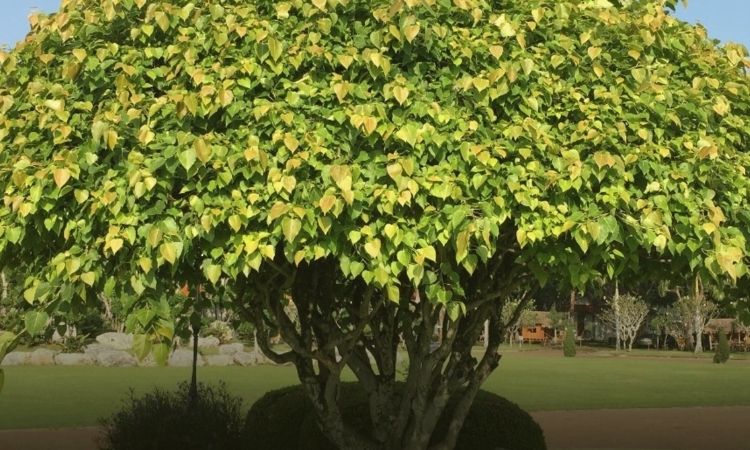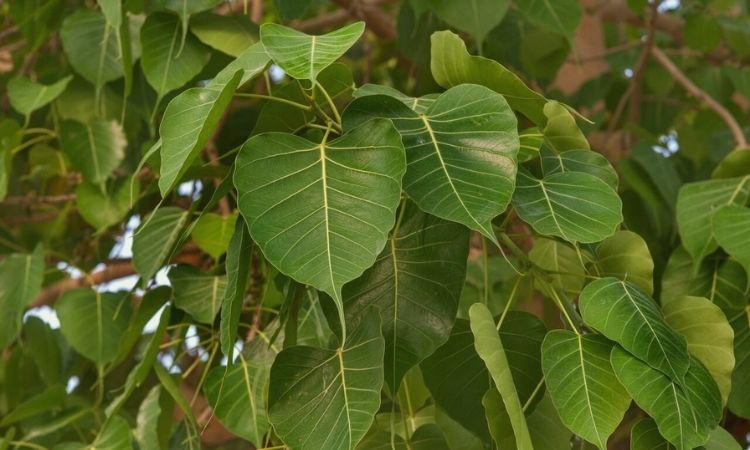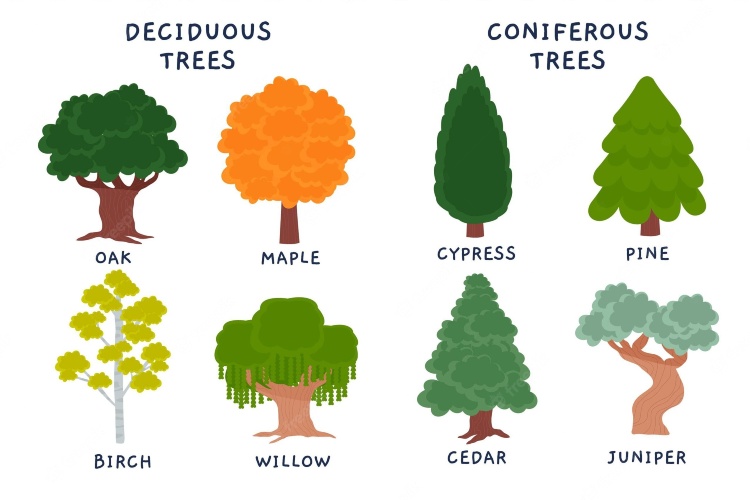|
Getting your Trinity Audio player ready...
|
About Peeple Tree
In Hinduism, Jainism, and Buddhism, the peepal tree (also described as the “Bodhi Tree”) is revered. Under this native Indian deciduous tree, Gautam Buddha acquired enlightenment.
This tree is a symbol of the eternal expanse of the Universe, and it is revered as the Tree of Life throughout the Indian subcontinent, particularly among Hindus, Jains, and Buddhists.
Even in scientific terms, the Peepal is a true “Tree of Life.” It produces oxygen even at night, unlike other trees. According to Ayurvedic medicine, every part of the Pipal tree can be used to treat a variety of health problems and ailments. This tree can treat up to 50 different ailments, including diarrhea, epilepsy, and stomach problems.
Peepal Tree Scientific Name: Ficus Religiosa
Types of Peepal Trees

Ficus Religiosa (Peepal Tree) comes in two varieties: Peepal and Bodhi Tree. Peepal has a long history in mythology and folklore. This plant is significant in the majority of religions that originated or were cultivated in the East.
The Bodhi tree, also known as the Paras Peepal in Hindi, got its name after Gautama Buddha attained enlightenment while sitting beneath it. It is more auspicious than a standard Peepal tree. It is the most sacred plant among Buddhist followers. This tree is also known as the Awakening Tree. The Bodhi tree is native to the Indian subcontinent. The tree also produces more oxygen than a normal Peepal tree, so its significance is emphasized in Hindu, Buddhist, and Jain cultures.
Peepal is associated with Yama, the god of death, and Saturn, the planet of justice. Traditionally, Peepal trees were planted on the perimeter of the old city walls and cremation grounds to keep evil spirits at bay and to provide fresh air for the city. This tree is also used in Hindu rituals, and because it is sacred, it is planted around temples.
Also Read: All About Apple Tree with Their Types, Benefits, and Images
8 Health Benefits Peepal Tree

1. For Asthma: – The bark and ripe fruits of the Peepal plant are useful in the treatment of asthma. Separately powder the bark and fruits, and then combine them in equal parts. For Asthma relief, consume this mixture three times per day.
2. For Stomach Pain: – Peepal leaf is a magical antidote when it comes to treating stomach ailments. You can make tablets for stomach pain relief by combining 2-3 peepal leaves with 50gm of jaggery.
3. For a Brighter Complexion:- By combining it with cornflour, the powder made from peepal tree bark can be used to make face packs. This face pack helps to brighten the skin’s complexion. The bark of the Peepal and Banyan trees is used in many Ayurvedic beauty treatments.
4. For Cracked Heels: – To cure cracked heels, simply apply milk extracted from the Peepal tree or a leaf extract to the affected areas. This will contribute to the softening and healing of the cracks.
5. For Toothache: – Prepare a rinse by boiling equal parts of Peepal and Banyan tree bark in water. Rinse your mouth with this on a regular basis. This will provide you with toothache relief.
6. For Constipation: – Including peepal tree fruit (the sacred fig) in your daily diet is an excellent way to relieve constipation. Constipation can be permanently alleviated by eating 5-10 figs per day.
7. For Heart Disease: – Begin drinking an infusion made from peepal leaves to treat heart-related issues such as palpitations and cardiac weakness. To make it, soak the leaves in water overnight and then distill them in the morning. For best results, drink this infusion three times per day.
8. For Eye Pain: – To treat eye pain, remove the milk from peepal tea leaves and apply it to your eyes.
The Lifespan of Peepal Tree

Its fast-growing nature, tolerance to various climate zones and soil types, reported lifespan of over 3,000 years and suffocating growth habit as it often begins life as an epiphyte are the primary reasons for its invasive behavior. The Peepal Tree, also known as Ficus Religiosa, is sacred to three major religions: Hinduism, Buddhism, and Jainism.
Siddhartha Gautama attained enlightenment and became the Buddha under this tree. Peepal trees are indigenous to the Indian subcontinent and thrive in hot, humid conditions. The original tree was destroyed, and it has been replaced several times since then. The best in the Caribbean and Black British fiction, poetry, and nonfiction can be found here.
It can also be found in shallow soils and rock crevices. View all of the plants’ posts and Beauty. The sacred fig grows naturally in submontane forest areas. A Peepal tree can live for 900 to 1500 years. Ficus religiosa is a large dry-season deciduous or semi-evergreen tree that can grow to be up to 30 meters (98 feet) tall and with a trunk diameter of up to 3 meters (9.8 ft). Their roots penetrate the support’s stem, eventually splitting it from within. Hope you enjoyed reading peepal tree lifespan.
Also Read: All About Lemon Tree With Their History, Benefits, Care, Fertilize, and Images



